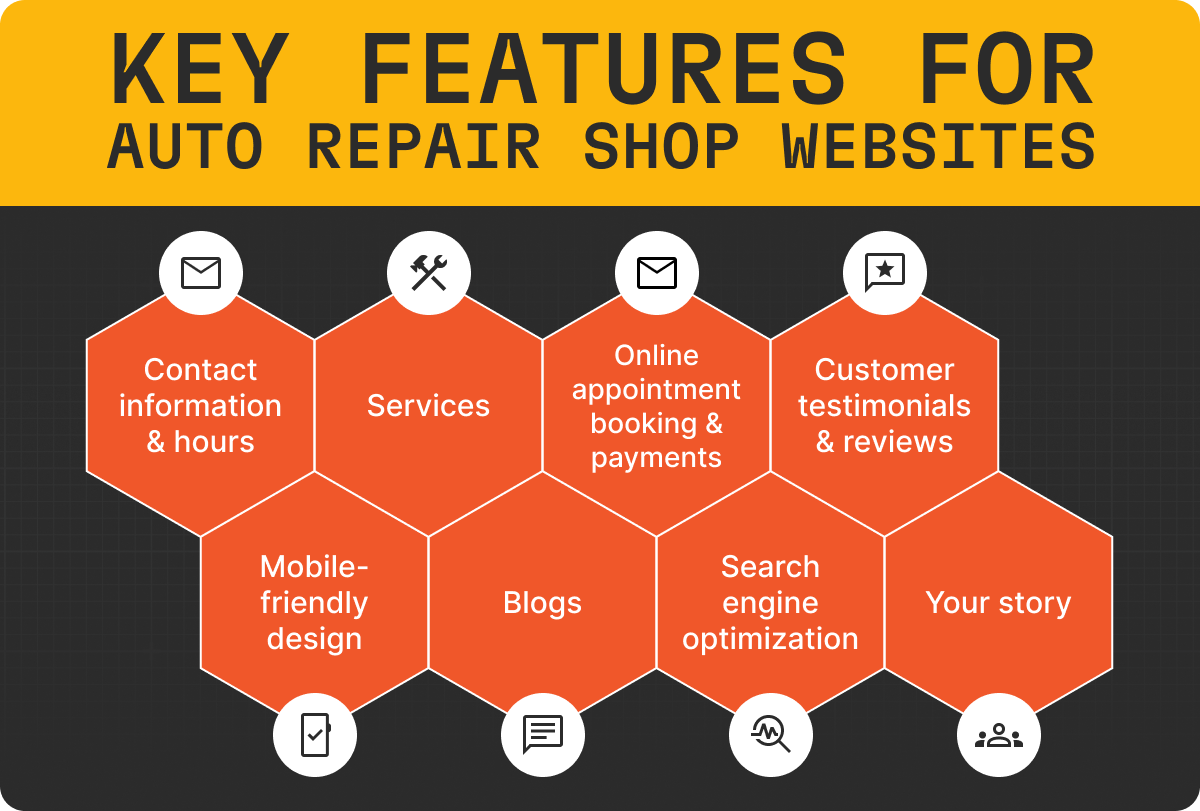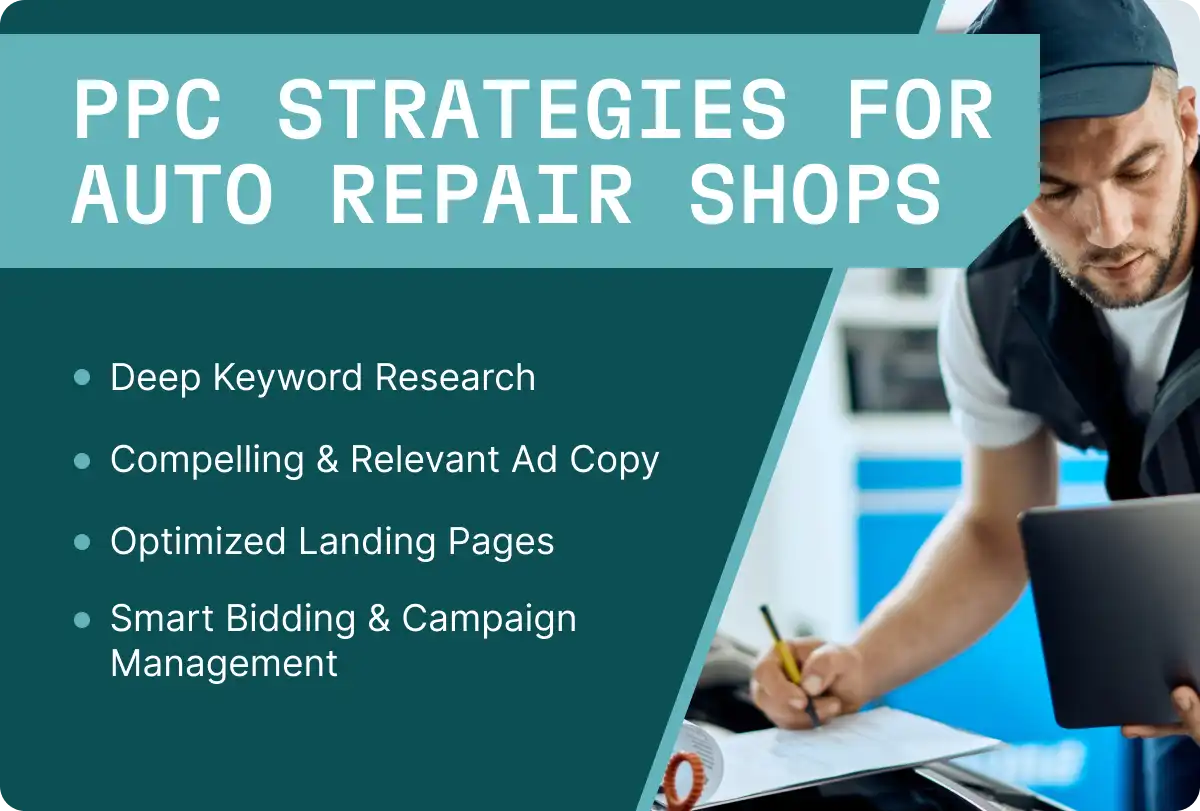Automotive Computer Programs Will Help Your Shop Thrive
Automotive computer programs help shop owners like you stay on top of all, or individual, aspects of your shop by bringing visibility into your shop’s operations. The programs you decide to go with are designed to help with singular components to your shop, various functionalities, or are created to link up with additional industry-leading solutions. Depending on the program—or programs—you choose for your shop, some or all of your team will benefit.
Types of Automotive Computer Programs
According to a survey by V12, 75% of the aftermarket auto repair jobs are performed by independent auto repair shops, while 25% of the business is with dealerships. The consumer demand for independent auto repair work has led to a series of innovations for independent auto repair shops, including better shop management systems and programs.
Innovative automotive computer programs assist shops in providing stellar customer experience, the ability to check off tasks in a timely manner, and a birds-eye-view into shop profitability.
The demand from consumers has motivated shop owners to find innovative solutions to:
- Selling repair work
- Doing repair work
- Logging their customer’s information,
- Streamlining communication from the technician to the service writer to the customer
- Monitoring the shop’s progress through reports
To make your search for the right mix of automotive computer programs less daunting, we’ll explore three different categories you can use as a reference: how the program functions, how the program is hosted, and how the program integrates with other programs.
Automotive Computer Programs by Functionality
Automotive computer programs can be complex or specific. The programs that are more complex offer a variety of features that can tackle different components of shop management and repair work, whereas a specific program is created to help with one component of the shop—whether that be digital vehicle inspections (DVIs), estimates, marketing, and so on.
Whether you choose to go with a complex or specific automotive computer program, you are faced with another level of functionality: whether the program addresses a specific auto repair shop function, a business function, or both.
Auto shop specific functions include:
- DVIs
- Car diagnostics
- Inventory
- Estimates
- Shop management
General business functions include:
- Payment
- Marketing
- CRM
- Accounting
- Reporting
Automotive Computer Programs by How They’re Hosted
Automotive computer programs can be further categorized by how they are hosted—whether that’s on premise or on the cloud. A cloud-based (also referred to as web-based and cloud-hosted) automotive computer program is hosted on the cloud and can be accessed from a browser. An automotive computer program that is on-premise is installed and operated from an in-house server and can only be accessed in that area, unless you set up an extensive remote workaround.
Automotive Computer Programs by Integrations
As shop owners, you know what’s best for your shop, so only you will know what the right mix of automotive computer programs is. Paying attention to the “Add-Ons” that come along with automotive computer programs is pivotal.
And by “Add-Ons” we’re referring to how well your choice of programs integrates with other systems and tools that will lead to shop success.
As you’re searching for the program, or combination of programs, that will optimize your auto repair shop, keep in mind how each program will function with your business, how it’s hosted, and how well it integrates with other solutions.
Digital Vehicle Inspection Software
Digital vehicle inspections (DVIs) have become a key component in the auto repair industry. Shops that use digital inspection tools save more time and sell more work than shops that use endless stacks of inspection sheets, clipboards, paperclips—you get the picture
Digital inspection software lets your team manage your inspection checklist and add technician findings and general comments along the way. With a more advanced DVI program, you can even attach photos and videos to your findings, easily draft estimates of proposed work, and quickly loop the customer in by emailing or texting the inspection at a click of a button.
With DVIs, your customers have the ability to see what’s going on with their car’s inspection whether they chose to wait in the lobby or go about their day. By implementing a transparent program into your shop’s inspection process, you are inherently building customer trust.
By going digital with your shop’s inspections, you can streamline the entire inspection and approval process by bridging gaps when it comes to communication from the tech to service writer, the service writer to the customer, and from the customer back to the service advisor.
How do I know which digital inspection software is right for me? Ask yourself:
- Does our current DVI program stand alone? Or is it built-in with our shop management system? Which is the right option for our shop?
- Do we have the ability to send photos and videos to our customers of any and all inspection findings?
You’ll want a DVI software that makes it easy to build trust. You should have the ability to send pictures and videos of the inspection findings to your customers. A more advanced program will talk to your shop management system through an integration, or better yet, will be built-in to your shop management system.
“We were originally running our shop with two systems; one was for digital inspections and the other was our shop management system. They were both reliant on a server, so I had an IT team as well. When I added it all up, I was spending $1,000 a month between the software companies and the IT support. And if the internet connection blipped for a split second, my digital inspection went down for about an hour. With Tekmetric, I’m paying a fraction of what I was, and I don’t have to worry about downtime or maintenance. We saved a bunch of money.”
- Stephane Grabina, Owner of Excluservice
Car Diagnostics Software
Any shop owner that does repair work on a vehicle, or provides state inspections, will need a diagnostic system, whether it’s a stand alone tool or an automotive diagnostic software, also known as an On-Board Diagnostics (OBD) Scanner.
With car diagnostic tools, your shop can stay on top of your customers’ vehicle malfunctions. Think of the car diagnostic test as an analysis of why your customer’s check engine light is on—it provides you with answers that might otherwise take a long time to diagnose.
Car diagnostic software will read your customers’ vehicle’s Onboard Diagnostic system in numerical and graphic forms. Once the software reads the data, the data is then evaluated, and error codes will be generated. From there, the technicians can easily look into the error codes to uncover the issues. A lot of car diagnostic softwares not only generate the faulty codes but also analyze the findings and provide shop’s with a user-friendly guide that will help detect and understand the errors and problems found.
A car diagnostic scanner will check for issues with a vehicle’s:
- Engine
- Transmission
- Oil tank
- Throttle
- Exhaust system
- Brakes
- Fuel injector
- Air flow
- Coolant
- Ignition coils
- Fuel consumption
- Fluid temperature
When you’re selecting your shop’s car diagnostic solution, the most important thing is that it is convenient for you and your team to use. With a diagnostic tool, you can take the codes it generates for you, decode them, and add the findings to your shop’s DVI software. And if you use a more advanced DVI software, you can include photos and videos of the car diagnostic findings on the inspection report.
How do I know which car diagnostic solution is right for me?
When you’re selecting your shop’s car diagnostic solution, the most important thing is that it is convenient for you and your team to use. With a diagnostic tool, you can take the codes it generates for you, decode them, and add the findings to your shop’s DVI software. And if you use a more advanced DVI software, you can include photos and videos of the car diagnostic findings on the inspection report.
Inventory Management Software
Inventory management software helps you keep track of your shop’s parts. More specifically, inventory software will track stock levels, parts usage, and parts warranties. More advanced inventory systems will even save and generate parts reports that include performance metrics related to your parts profits (for example, total parts value).
Staying on top of your shop’s inventory is crucial in the auto repair industry; and not having to do that with an excel spreadsheet and endless sheets of paper will help your team focus on getting customers back on the road safely and in a timely manner.
By selecting an inventory management software that integrates with or is built into a more advanced system, your shop has the ability to tie all moving parts together. You can see which parts are helping your shop make money, manage the amount of parts your shop needs to remain in-stock but not over-stock, and tie your shop’s inventory to your shop’s ROs.
How do I know which inventory software is right for me? Ask yourself:
- Are we able to track and manage all parts in one platform?
- Can we be consistent with our below minimum stock, above maximum stock, and out-of-stock ratio?
- Will we have the ability to sync our inventory to our shop’s ROs and canned jobs?
By choosing an inventory management software that integrates with or is built-in to a shop management system, you can manage, monitor, and track all of your shop’s parts and make business decisions based on what is working and what isn’t working in terms of parts ordered.
Estimating Software
Estimating software helps shops build dependable estimates so they can confidently send them to customers for approval. A good estimating software will sync with your parts ordering platform and labor guide to help your service advisors quickly write accurate prices for parts and labor on estimates.
More advanced estimating systems may give your team the ability to:
- Track old work and declined jobs so that they can quickly build estimates
- Pull information from DVIs to further build trust with customers
- Easily receive digital authorization to keep work moving
- Generate invoices from the estimate, saving your team precious time and resources
How do I know which estimating software is right for me? Ask yourself:
- How quickly can we build estimates on this software?
- Will we save time between estimates, repair work, and invoicing because of how the software ties these processes together?
- If we upgrade to an estimating tool that is built-in or integrates with a management system, will all of our customer’s declined jobs be saved?
Estimating software should be tied into other parts of your process, whether that’s through integrations or because it’s built into your shop management system. If estimating software were to be standalone in your shop, the inefficiencies and bottlenecks will begin to add up, taking a toll on your bottom line.
“We send every DVI, estimate, and invoice via text or email. It doesn’t take us twenty minutes to write a quote anymore, so we have no problem writing up a quote anytime there’s an opportunity to do so. We don’t put it off.”
- Austin Blanton, Owner of Import Auto, Inc.
Payment and Invoicing Programs
Payment and invoicing software is used by businesses to make collecting and processing payments easier, to protect themselves from chargebacks, and to provide customers with reasonable payment options.
Businesses have become more and more accommodating and adaptable when it comes to offering different payment options. In fact, if your auto shop offers a variety of quick and easy payment options, customers are more likely to return to your shop for future repair work.
By leveraging the right payment and invoicing solutions, you can streamline the process of getting paid, which in turn helps your shop reach your financial goals.
How do I know which payment software is right for me? Ask yourself:
- Is the payment process as efficient as possible?
- Are we able to accommodate customers who want to pay from their phone?
- Does the solution help me provide my customers more payment options?
- Does it protect me from chargebacks?
- Will I have to sign a contract?
While it may seem like a small part of the overall repair process, your payment and invoicing system greatly impacts your shop day-to-day operations. When you can accommodate your customers’ preferred methods of payment, automatically send an invoice and a receipt, and save the payment information to your shop’s accounting system, everyone wins. With an integrated program or a built-in accounting program you have the ability to do that.:
“One of the most helpful changes I made is switching to the text-to-pay system, Tekmerchant. We don't even have to take the customers’ cards anymore. We can collect touchless payment over the phone or via text. Just last week, I was able to pull over to the side of the road, pull up Tekmerchant on my phone, and take payment because it's all web-based. The credit card terminal turned on at the front desk and took the payment.”
- Henderson Johnson, Owner of Toyo Automotive
Marketing Software
Marketing software helps businesses market their services, boost sales, and expand their customer base.
Here are some useful marketing functions that marketing software can let you do:
- Send automated mailers, postcards, emails, and text marketing campaigns
- Run promotional campaigns
- Maintain your social media accounts
- Monitor customer engagement,
- Use real-time reports to gauge the success of your marketing efforts
How do I know which marketing software is right for me? Ask yourself:
- Which marketing channels are the most important to our audience?
- Does the marketing software in question target those channels?
- Will I be able to generate marketing reports?
By choosing a system that either integrates with a marketing solution or has one built-in, you are able to not only keep track of your customers’ standard information and vehicle information, but also keep track of information that is crucial for staying on top of your shop’s marketing systems.
For example, you can see how each customer found out about your shop: was it through word-of-mouth or was it from reading a review a friend posted on Facebook? It’s the little things like that that will make a huge difference as you grow your customer base.
“As for marketing, we pull a lot of the data right out of Tekmetric. We've got some really good referral and outreach programs. We realized early on that cold-call customers, people who were calling for price check-ins, were not our best clients; they're not our highest ARO. When we increased our snowball of referrals, it attracted the kind of clients we do want—the clients who come in here with confidence in advance and trust us to create an honest repair order. If a customer is set-up as a marketable customer, we're pulling their information from Tekmetric and feeding that right into Facebook and Google. Our customers are able to match us with other similar customers.”
- Andrew Minkler, Owner of Bavarian Motor Repairs
CRM Software
Customer Relationship Management (CRM) software and marketing software are closely related, and there can often be a bit of overlap. The simplest way to differentiate marketing from customer relationship management is that marketing gets more customers to come to your shop while CRMs help you build a reputation with prospective customers and maintain the relationship you have with your current customers. CRM software is designed to track marketing, sales, and customer service to provide shop’s with a cohesive database of customer interactions.
CRM tools usually encompass marketing, sales, and customer service all in a single platform. Your shop can use a CRM system to gain a complete picture of customer relationships while simultaneously tracking customer interactions and sales, and building unique customer experiences.
How do I know which CRM software is right for me? Ask yourself:
- Will the system in question help me manage the reputation of my shop?
- How easily can I track customer success?
- How does the CRM system complement my marketing solutions?
- Does the CRM offer reporting tools that show me key performance indicators that relate to customer satisfaction such as referral rates and reviews?
It’s worth having a CRM that compliments your marketing programs, especially if you want to do more sophisticated marketing and online reputation management. In order to take your customers’ experience at your shop to the next level, invest in a CRM tool that integrates with or is built into your shop management system.
Accounting Software
Accounting software helps businesses manage expenses and payroll, reconcile their payments, and keep track of all finances, drastically improving the time it takes for shop owners and bookkeepers to stay on top of the shop’s cash flow.
Many high-performance auto repair shops have both accounting software and reporting software. Accounting software helps take care of books while reporting software helps shop owners make business decisions. And when it comes to reconciliation, reporting software and accounting software compliment one another, because if you notice something is off in your accounting software, you can go into your reporting software and quickly get to the root of any anomalies or missing financial data.
How do I know which accounting software is right for me? Ask yourself:
- Have we outgrown our current accounting software?
- Will the accounting software in question provide an accurate understanding of all expenses in my shop?
- Will investing in an advanced accounting software minimize confusion and maximize confidence that all expenses are accounted for?
Having a standalone accounting software is optimal for all auto repair shop’s because it separates accounting from reporting. It’s wise to have your reporting built into your shop management system and accounting on a separate piece of software so that you can cross reference your numbers to ensure accuracy.
Reporting Software
Reporting software is where your shop’s successes come together. It’s where you can visualize the growth of your shop through real-time data. By investing in reporting software, you will get to know your business on a deeper level so that you can make game-changing business decisions with confidence.
Most of the automotive computer programs we touched on above can be tracked through your shop’s reporting software, especially if you go with a shop management system that integrates with these programs or has some of these functions built into the system.
In the more advanced reporting software, you can see:
- Financial reports such as End-of-Day Reports, Accounts Receivable, and Accounts Payable
- Employee reports such as Service Writer Performance, Technician Reports, and Commission Tracking
- Customer reports such asDeclined Jobs, Customer Leads, and Marketing Source Reports
- Parts Reports such as Parts Purchased and Parts Usage
How do I know which reporting software is right for me? Ask yourself:
- Is the data real-time and accurate?
- Are the reports clear and easy to understand?
- How does the reporting software pull data from other programs, processes, and business functions?
- Can I strategically track short and long-term metrics to improve business performance?
- Will it help us leverage our shop’s data to ensure we are making the highest profit possible?
- Can I see End-of-Day sales, End-of-Month sales, Gross Profit Percentage, ARO, Car Count, and Gross Profit Dollars?
By investing in a system that logs shop performance data for you, you can save time and make better decisions for your business. To take it a step further, if you invest in a software that stores real-time data and automatically crunches the numbers for you, you have the ability to discover correlations between your shop’s metrics and identify any potential gap with no time lost.
Run a More Connected Shop With a Shop Management System
Shop management systems are automotive computer programs that help you manage and track multiple processes and business functions of your shop. Almost all shop management systems touch estimates, work management, and invoicing, but each system differs in terms of whether they are on-premise or cloud-hosted, and how they incorporate or tie into other business functions such as reporting, customer service, and marketing.
Shop owners, service writers, parts managers, and technicians can use a shop management system to manage day-to-day business operations. Not only that, but shop management software can also expedite service delivery when it comes to inspections, customer authorizations, and repair orders.
“A big part of supporting my team is having a shop management system that supports us.”
- Bryan Jewett, Owner of Casey’s Automotive
Over time, shop management systems have become more comprehensive, developing more and more features.
For instance, a lot of modern shop management systems have inventory systems and DVIs built-in, making them incredibly convenient for shops who want to flow from one process to the next without leaving their trusted interface.
When shopping for a shop management system, you’ll want to think about what they do best, what they have built-in, and how they integrate with other solutions.
How To Choose the Right Shop Management System
Of course, as a shop owner, you know what’s best for your shop. But it’s always good to be prepared for future goals and reaching those milestones you’ve always envisioned for your shop.
Now that you know the different types of automotive computer programs, you’ll want to ask yourself some bigger-scope questions:
How should programs I use at my shop work together and compliment one another?
Is there one solution that does it all, or should I use a bunch of separate solutions?
Is there one solution that does almost everything, and integrates with the other solutions I want to use so that I can truly customize my business and optimize business performance?
It’s highly likely your shop currently has several different programs in place that address different components of your shop.
But there’s a reason you’re reading this blog. Chances are, you aren’t happy with the current mix of automotive computer programs you have, or maybe you’re wanting to simplify most of your stand alone programs to be built-in or integrated with one shop management system.
Finding the right mix of programs starts with a shop management system that allows room for integrations.
When you're researching shop management systems, you'll want to find a system that gives you flexibility in what you can and can’t do down the road. There’s a spectrum to shop management systems.
Some systems hone in on the idea of “all-in-one,” but they don’t allow room for integrations because they assume what your shop needs. The other side of the spectrum are the systems that integrate and partner with industry-leading programs so you can find what your shop needs.
Now, think of those “all-in-one” shop management systems. You can choose to go with that one, but eventually one or some of its features won’t meet your standards. And because they are a one-stop-shop, you don’t have the benefit to add on an integration.
If you were to meet those needs by investing in additional automotive computer programs, you’re going to run into inefficiencies due to the program’s inability to “talk to” your all-in-one system.
Tekmetric offers shop owners the best of both worlds. We offer comprehensive solutions for workflow, efficiency, and reporting, but we also work with some of the industries leading programs to create clean integrations that streamline each and every aspect of your business.
How Tekmetric Helps You Innovate
Our goal is to minimize errors, maximize efficiencies, centralize communication, and improve your shop’s business performance. Tekmetric makes that possible by letting all features within the system talk to one another.
Once a customer walks into your shop (or calls), you can use Tekmetric to:
Provide customers a high-quality customer experience
Your team has the ability to add in unique customer profiles that can include the customer’s preferences. You can add all of your shop’s customers into Tekmetric. From there, each customers’ history, declined work, and vehicle information will be saved to their profile.
Manage overall workflow
Tekmetric’s Job Board and Tech Board makes it easy to stay on top of ROs, your team’s bandwidth, and your shop’s overall efficiency. The Job Board will give service writers real-time updates of job’s status so they can easily update customers each step of the way. With the Tech Board, technicians can quickly update service writer’s without interruption, directly from their workstation.
Assemble ROs in minutes
Tekmetric makes it easy to create, build, edit, and assign ROs within minutes. When a service writer goes into Tekmetric to build an RO, they can enter the customer’s information, and if that customer has been in the shop previously, Tekmetric will auto populate all of the customer’s information, previous work, and vehicle information. If it’s a new customer, they can quickly select “Add New Customer” and enter in their details. Once ROs are created, it’ll become a “card” on the Job Board. Having the ability to glance at a screen and see real-time progress means your service writers can consistently and confidently update customers with accurate information with no time wasted.
Streamline inspections with built-in DVIs
Transparency is incredibly important to us, and we know it’s important to you, too. Just like transparency helps us build trust with our customers, it does the same for shop owners and their teams. Tekmetric has a built-in DVI feature that helps shop’s take care of shop management and inspections all in one system. With the DVI feature, technicians and service writers can create custom inspections, configure vehicle findings, and upload photos. From there, the service writer can share the inspection findings with customers by text or email, so they can walk customers through findings, build trust, and close more work.
Create custom canned jobs
Think to yourself how many repeat ROs your team does each week. Chances are you can think of at least three jobs that are created over and over. Rather than having to draft a new RO each time, your shop can create and manage custom canned jobs all in one location. Your team can also search canned jobs by the title of the job as well as create custom canned vendor sublets.
Tek-Tip: Take advantage of Tekmetric and BG Products, Inc. partnership by using BG Canned Jobs.
Each time your shop creates a canned job, you’ll have the option to use high-quality maintenance products for fuel systems, engines, transmissions, brakes, power steering, cooling, battery, and climate control systems.
Watch our videos on Creating Canned Jobs and Canned Job Management
See your parts all in one place
You don’t have to worry about buying a separate inventory automotive computer program with Tekmetric, because your shop will have a built-in inventory table that will cover all of your parts’ bases: parts ordered, parts in stock, parts above stock, and parts below stock. Having a long list of parts can get confusing without the right system; so Tekmetric cuts down the time by giving you the option to filter parts by type, by preferred vendor, and letting you search for parts by brand, part name, or part number.
Gather insights at a glance
The ultimate advantage to using a shop management system like Tekmetric is that you'll be able to manage your team and your customer experience all while tracking and analyzing reports in real time.
Everything that happens in Tekmetric is automatically tracked to generate reports. By quickly glancing and gathering insights about your shop performance from anywhere, you can spend time outside of the shop without worrying about what’s going on in the shop. You can monitor your shop’s GP Percentage, GP Dollars, ARO, Car Count, Close Ratio, and more. Gain a crystal clear picture in one glance with Tekmetric’s Real-Time Reporting.
At Tekmetric, we make the complexities of shop management and business growth easy to navigate so that shop owners can spend more time innovating. We think about how repair orders and DVIs tie into the overall workflow and efficiency of your shop, and how your shop’s data and reports tie into the overall success and profitability of your business.
Tekmetric is cloud-based, so you can focus on your shop while you’re out of the shop. We want the shop owners that choose Tekmetric as their shop management system to let their imagination run wild, which is why we’ve formed a wide array of reliable and credible partnerships with other leaders in the auto repair industry.
How Tekmetric Works With Other Industry-Leading Solutions
Tekmetric provides shop owners with integration options and a clean user experience so that they can explore more opportunities. We partner with other leaders in our industry because we understand that shop owners already know and love some specific programs, and that having options is crucial to the innovation process.
We also want things to be simple and easy, which is why we work with industry-leading program providers to create clean integrations within Tekmetric.
- We partner with Mechanic Advisor to bring your customers’ real-time scheduling
- We partner with Shop Owner Coach to bring your shop personalized coaching and training.
- We partner with Advance Auto Parts to be their customers’ go-to shop management solution
- We partner with BG Products, Inc. to provide shop’s with high-quality parts for each canned job
- We partner with MyShopManager to ensure your shop’s marketing communication leads to higher customer engagement
And the list goes on.
Because we simplify the connection between multiple different systems, you have the ability to fine-tune what works best for your shop. And not only do we want our system to be simple, but we also enjoy and embrace the possibilities that arise when we work with other people. We simplify your shop management while providing you with more options to take your shop further than ever before.



.png)
.png)





.svg)



.svg)